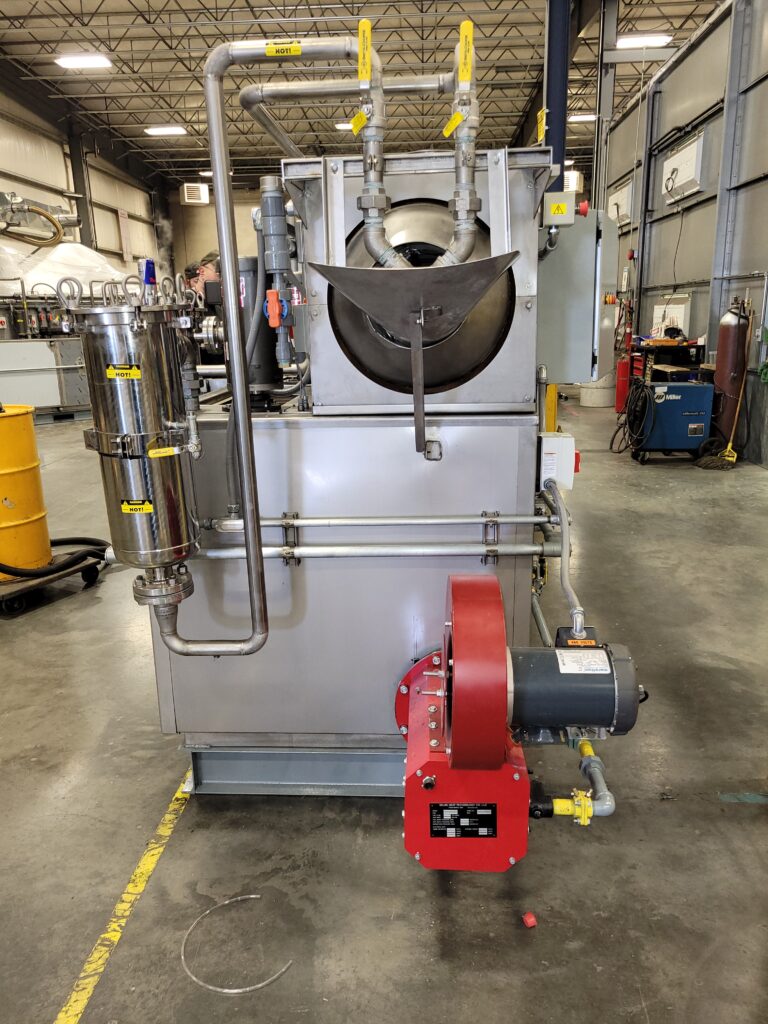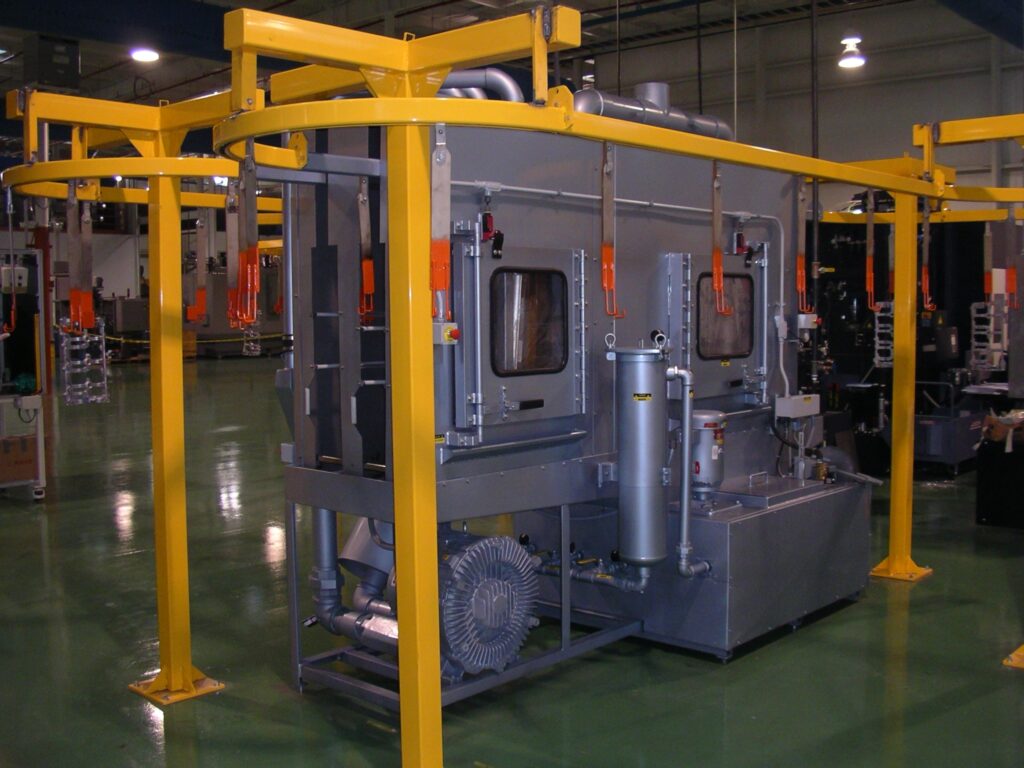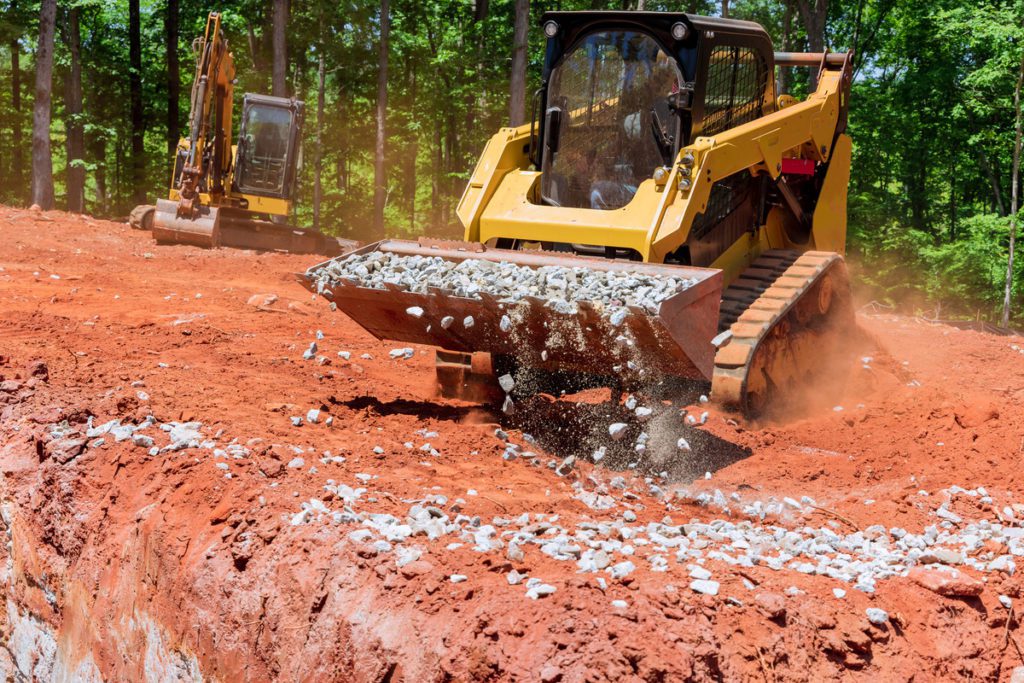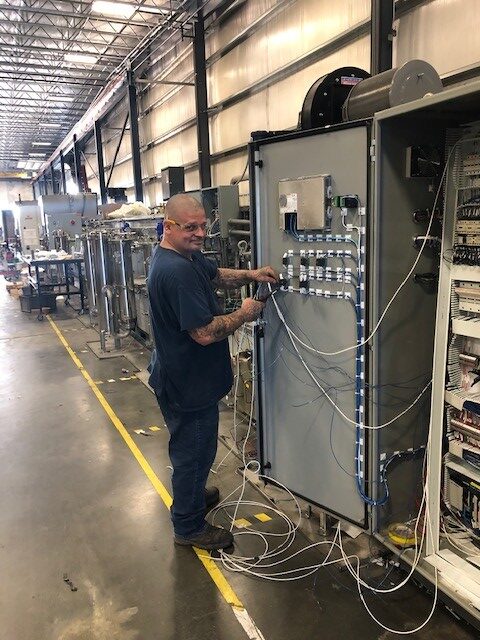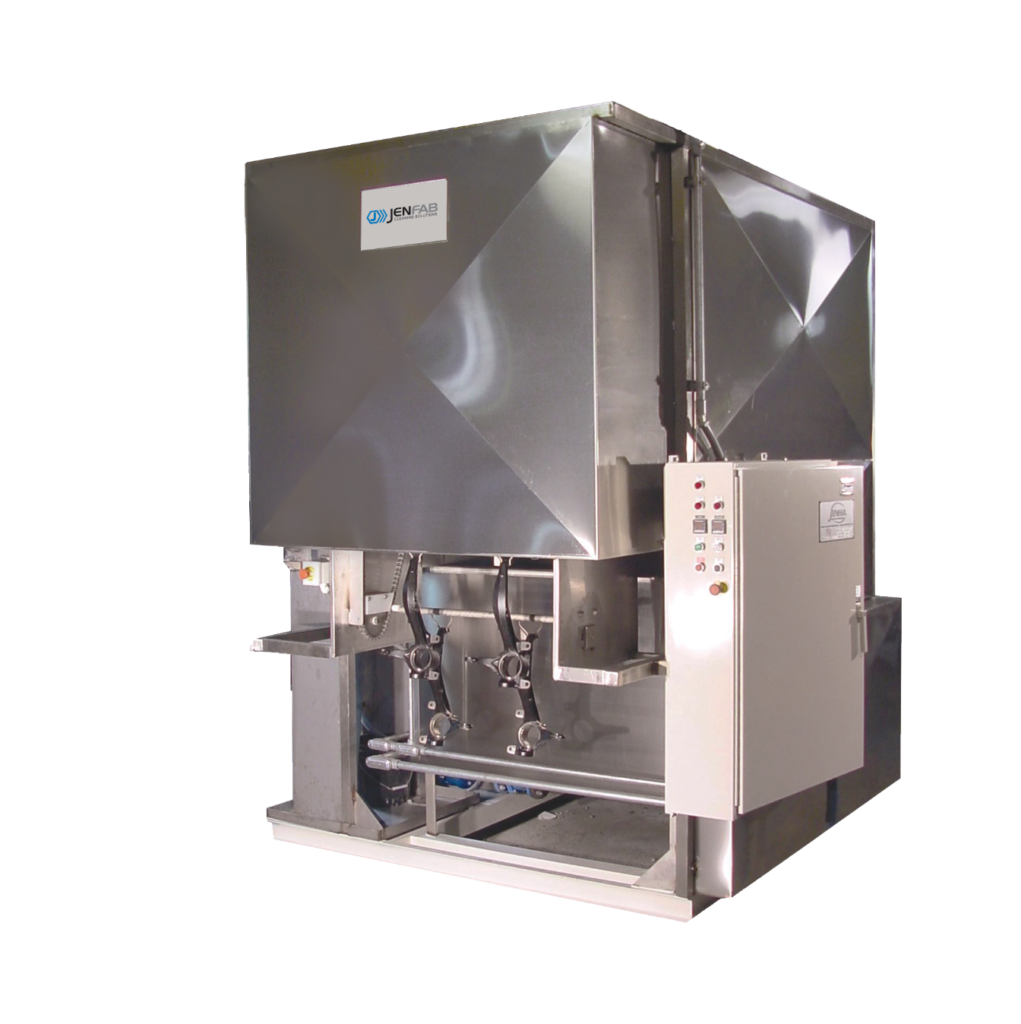Your ability to clean increases as the temperature increases. Many heated parts washers use industrial gas burners to reheat aqueous cleaning solution.
Gas burners require tuning to burn efficiently. Companies should tune gas burners periodically, adding it to your regular parts washer maintenance.
Is your heated parts washer struggling to maintain the correct temperature? It may be time to tune its gas burner.
5 Steps to Tune an Industrial Gas Burner
Combustion occurs when hydrocarbon fuel reacts with oxygen in the air. It produces carbon dioxide, water and heat. When you tune a gas burner, you adjust the fuel-to-air ratio (FAR).
You can find the fuel-to-air ratio by analyzing the flow of air and gas. The ratio compares the measure of fuel to the measure of air. Adjustments to this ratio can increase efficiency and prevent the burner from running too rich.
Inefficient burners consume more fuel and increase wear on the equipment. Tuning the burner also lets you check for any buildup, dirt or warping on the surrounding parts.
Always go slow and be thoughtful when tuning a gas burner. Follow safety measures set by the manufacturer and your company.
1. Set the gas burner to high fire.
You want to tune a burner when it is hot. A cold heating system can throw off your readings. Start when the heating system is at room temperature, then set the burner to high fire. If the burner system uses a blower, you should hear the blower’s motor kick on.
2. Open the air header and gas header.
Open the burner’s valves. If your combustion heating system has multiple burners, open the valves for each one.
3. Allow the gas burner to reach the required temperature.
Before checking the oxygen levels, let the burner reach a high temperature.
4. Analyze the exhaust oxygen levels.
You can use a gas analyzer to measure oxygen in the flue gas or monitor the machine’s combustion control system (CCS) if one is available.
Excess oxygen is excess air. Generally, the amount of excess air should be around 3%. Some excess air is necessary for safe heating. Too much excess air causes inefficiencies, as you burn fuel heating the air instead of the cleaning solution.
5. Make necessary adjustments.
Adjust the fuel flow based on your analysis from step four. Oxygen levels should be between 2.5% and 4%.
If the machine’s burner has high oxygen levels, increasing the flow of the natural gas will lower the amount of oxygen. Too little oxygen? Decreasing the flow of natural gas will increase the oxygen available.

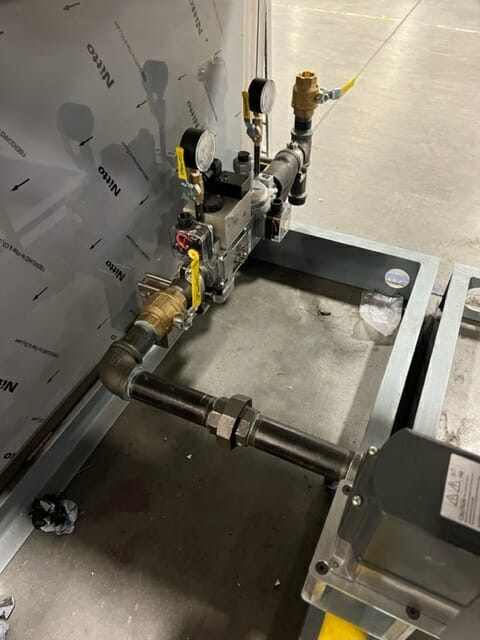

More About the Fuel-to-Air Ratio
Controlling the fuel-to-air ratio helps you run your heated parts washer more efficiently. Tighter ratios increase your control over combustion and reduce fuel usage.
Stoichiometric combustion is the “perfect” combustion ratio, but it is not always the most efficient or practical way to run a machine. You achieve stoichiometric combustion with an air-to-gas ratio of 10:1—or when the reaction consumes all of the fuel with no excess air (oxygen).
Combustion Products: Carbon Dioxide Levels
Combustion creates exhaust, or flue gas. The flue gas contains carbon dioxide, water and nitrogen.
If you use natural gas, you want to see carbon dioxide levels between 9% and 10%. Carbon dioxide levels should remain between 10% and 12% for those using propane gas.
The Need for Excess Air: Safe Carbon Monoxide Levels
Excess air ensures a safe combustion process. Not adding enough air to the fuel means you won’t burn all of the gas. When too little oxygen is present in the mixture, it produces carbon monoxide instead of carbon dioxide.
According to OSHA, workers should not be exposed to more than 50 PPM (parts per million) of carbon monoxide within an eight-hour timeframe. Carbon monoxide can be deadly, so monitoring its levels and ensuring you have enough oxygen available is essential.
Know What Type of Gas Burner You Have
The burner type can affect its consistency and heat output. Knowing what kind of burner your machine has helps you understand how heat is created and transferred.
Forced-draft burners utilize blowers that run continuously. The pressurized air from the blowers oxidizes the fuel. Natural-draft burners do not use blowers. These burners rely on their design to draw air in using the kinetic energy produced by the gas stream.
You can control the fuel-to-air ratio by:
- Using a fixed air system so that air flow remains constant. You control output by adjusting the burner’s fuel flow.
- Implementing a variable-frequency drive to control the air and regulate the blower’s speed.
- Monitoring the flow of air and gas with sensors. A control system can regulate the flow of both air and fuel, adjusting as needed.
Check Heat Transfer Surfaces
Flue gas can cause contaminants to appear on surfaces where heat is transferred. When tuning a machine burner, take the time to look for signs of soot, scale and oxide buildup on nearby surfaces. Clean the surface if you notice any deposits.
Unwanted deposits are signs that something is off. You may have a low air-to-fuel ratio or improperly prepared fuel. Continual buildups may mean that your gas burner is malfunctioning.
Dirty heat transfer surfaces can reduce efficiency by approximately 1% for every 40℉ increase in stack temperature.
For the best cleaning results, you must maintain your aqueous parts washer. Add tuning gas burners to your regular parts washer maintenance.
When you tune the machine’s gas burners, you ensure your heated parts washer will run efficiently and safely. Tuning burners reduces fuel consumption while helping you achieve the clean you need.
Partner With Jenfab for Maintenance & Custom Parts Washers
Need help tuning your parts washer’s burner? Connect with a technician to send a maintenance request. Our experienced technicians help with preventative maintenance and repairs. We can offer advice and instructions on tuning a gas burner or visit your facility to help out.
Is your parts washer not working as well as it used to? Time for an upgrade? At Jenfab, we design and manufacture heated parts washers to your specifications. Request a quote from our experts to get started.












